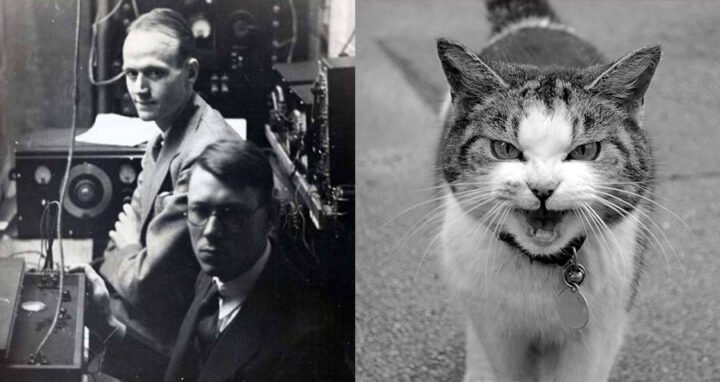Cat turned into the telephone- well, we live in a strange world indeed.
And here is the story behind this invention.
(Keep your cats away while reading this blog)
Who? When? And Why?
Professor Ernest Glen Weaver and his research assistant Charles William Bray. They both conducted this experiment at Princeton University in the spring of 1929.
Their curiosity set out to make the world’s first only cat phone.
The GOAL was to test the auditory nerve that perceives sound. In the name of science, let the absurdity begin.

The cat into phone transformation
Wever and Bray took an unconscious, but alive, cat and transformed it into a working telephone. Just to test how sound is perceived by the auditory nerve.
They first sedated the cat and opened its skull to better access the auditory nerve. A telephone wire was attached to the nerve and the other end of the wire was connected to a telephone receiver.
Bray spoke into the cat’s ears, while Wever could hear him through the receiver 50 feet away in a soundproof room.
As a result, their experiment was much more than they imagined. The common notion during this time was the frequency of the response of a sensory nerve is correlated to the intensity of the stimulus. Louder the sound, higher the frequency. Their experiment was proof of that theory.
Therefore, they performed more experiments on the cat, reattaching the telephone wire to different parts of the brain, and restricting blood flow to the brain. These methods failed because they realized that the frequency of the response in the auditory nerve is directly correlated to the frequency of the sound.
(In short, a cat needs to be very much alive for a successful experiment.)

What happened later?
The Howard Crosby Warren Medal of Society for their contribution.
Bray became an Associate Professor at Princeton University. Later, became the Associate Research Director of the United States A.F.H.R Research during World War II. He served as one of the leading scientists of the civilian psychological research for both the National Defence Research Council and the Navy.
Wever became the head of the department of psychology at Princeton. He also worked with Doctor Julius Lempert of the Lempert Institute of Otology. He researched on otosclerosis, abnormal bone growth in the ear that leads to hearing impairment due to the ear’s inability to amplify sound. During World War II, he was also a consultant to the National Research Council on anti-submarine welfare.
What lesson learned from the cat telephone?
Their work helped to lay the foundation for the FIRST COCHLEAR IMPLANTS. As a result, it was inspired through the telephone wire in the auditory nerve. This device takes sound vibrations and tunes them into electrical signals.

(Well, DON’T TRY THIS BECAUSE IT’S AGAINST ANIMAL RIGHTS ACT and HUMANITY of course.)
All images belong to their respective owners.
Do check out our latest blog Cooling Of Nano-particles At Quantum Level

